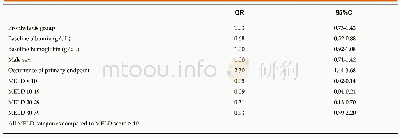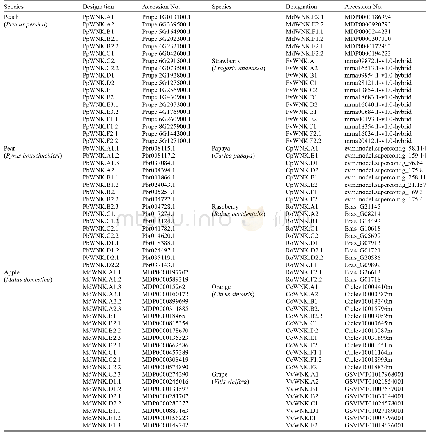《Table 6–Genes/QTL identified for abiotic stress tolerance in chickpea and pigeonpea.》
 提示:宽带有限、当前游客访问压缩模式
提示:宽带有限、当前游客访问压缩模式
本系列图表出处文件名:随高清版一同展现
《Integrated physiological and molecular approaches to improvement of abiotic stress tolerance in two pulse crops of the semi-arid tropics》
Although marker-assisted backcrossing(MABC)has been widely used for introgression of resistance to biotic stresses into chickpea and other grain legumes,reports of the application of MABC for improving abiotic stress resistance/tolerance in chickpea are few.Under the Tropical Legume-Iinitiative of the CGIAR Generation Challenge Program financed by the Bill&Melinda Gates Foundation,two major MABC projects are continuing in chickpea for drought tolerance at ICRISAT and its partner organizations[138].Drought-tolerant progenies(BC3F3:4)in the genetic background of‘JG 11’(a popular Indian chickpea cultivar)have been developed by the transfer of a genomic region,a“QTLhotspot”from the donor‘ICC 4958’that carries several QTL for drought tolerance.Initiatives have also been undertaken to use marker-assisted recurrent selection(MARS)in chickpea to develop and identify drought-tolerant lines having favorable alleles using ICCV 04112×ICCV 93954 and ICCV 05107×ICCV94954[73].In pigeonpea,a few candidate genes such as Cc Hy PRP,Cc CYP,and Cc CDR genes that control drought,salinity and cold have been characterized and validated(Table 6).Recently,the Al-responsive Cc STOP1 and Cc MATE1genes have been characterized[82];this will contribute to pigeonpea breeding for tolerance to soil acidity.
| 图表编号 | XD0012313300 严禁用于非法目的 |
|---|---|
| 绘制时间 | 2018.04.01 |
| 作者 | Arbind K.Choudhary、Rafat Sultana、M.Isabel Vales、Kul Bhushan Saxena、Ravi Ranjan Kumar、Pasala Ratnakumar |
| 绘制单位 | ICAR Research Complex for Eastern Region、Bihar Agricultural University、Texas A&M University, College Station、International Crops Research Institute for the Semi-Arid Tropics、Bihar Agricultural University、National Institute of Abiotic Stress Management |
| 更多格式 | 高清、无水印(增值服务) |
查看“Table 6–Genes/QTL identified for abiotic stress tolerance in chickpea and pigeonpea.”的人还看了
-

- Table 2 Updated preoperative indications for endoscopic submucosal dissection in Japanese gastric cancer treatment guide
-

- Table 5 Multivariable analysis of risk factors for in-hospital mortality in patients with hepatic cirrhosis
-

- Table 2.Diffusion coefficients at 1300°C of elements in the present alloy and those reported for other Co-based alloy sy




![Table 3:Tolerances (wt.%) for trace elements suggested by Gundlach of Element Materials Technology Wixom[13]](http://bookimg.mtoou.info/tubiao/gif/ZZAF201902001_08100.gif)
